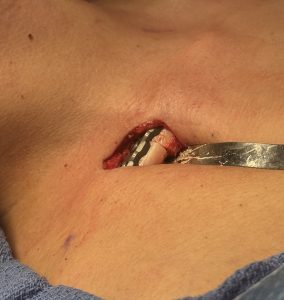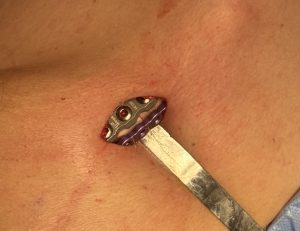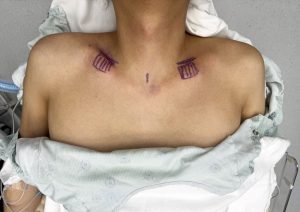Background: The clavicle is a unique bone of the body more so than just being horizontal in orientation. It is a tubular bone that varies in shape and diameter as its moves from the sternoclavicular joint medially out to the acromioclavicular joint laterally. With lengths in the range of 13 to 16cms, cortical diameters ranging from 10 to 18mms and varying angulations along its S-shape length there is a great variability in the shape and measurements of individual clavicles.
When performing clavicle ostectomies for shoulder reduction/narrowing the diameter of the bone has its greatest relevance when selecting screw lengths for secure plate fixation. It is critical that bicortical screw engagement occurs which requires long enough screws. But another unique feature of the diameter of the clavicle is seen when the two ends are put back together after the bone segment is removed….the two reapplied ends will not have the same diameter. The distal end will always be smaller than the medial end and not by an insignificant amount. The distal end is typically about 2/3s of the diameter as that of the medial end.
These clavicle diameter differences are not typically seen on the superior surface where the plate is applied. They can only be seen on the underside and is why shorter screw lengths are the distal bone side. The relevance of this diameter differences when the bone heals is unknown if there is any at all. Its potential relevance may only if the bone hardware is ever removed and does the bone remodel back to its original diameter/strength.
Case Study: This patient desired shoulder feminization surgery with clavicle lengths of 15.5cms and a bideltoid distance of 48.5cms. The left clavicle was slightly longer than the right and the right clavicle had more of an s-shape than that of the left.
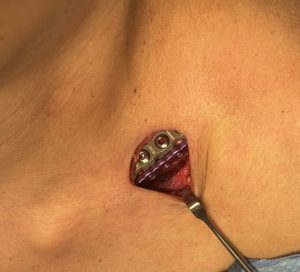
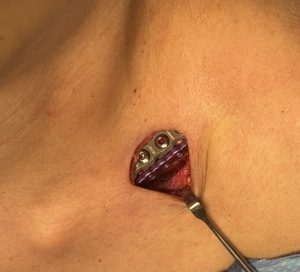
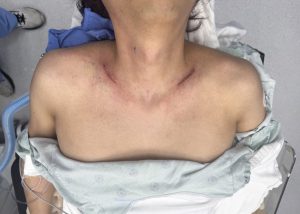
As can be seen in this patient the reunited bone ends of the clavicle have dissimilar diameters which is an observation I have seen since doing my very first case of shoulder narrowing almost a decade ago. This is not an issue for bone healing nor an increased risk of non-union. Its only remote relevance could be when it comes to hardware removal if a patient so wishes. Would the strength of the healed osteotomy site, with a slightly decreased diameter than before, be adequate to resist strenuous activities once the hardware is removed? Probably so but this is why if hardware is removed to be cautious about very strenuous activities in the first one or two month after the surgery.
Key Points:
1) Shoulder reduction surgery works by removing a section of the clavicle from its middle straight segment.
2) The removal of this short length of the clavicle creates two different diameter bone ends.
3) The long term implications of a healed clavicle osteotomy site that does not have the original bone diameters is unclear.
Dr. Barry Eppley
World-Renowned Plastic Surgeon



